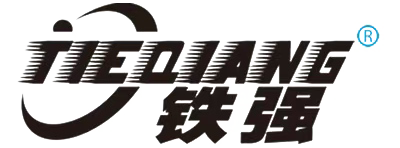
07
2025
-
07
Ensuring Maximum Performance Through Release Bearing Reliability: A Comprehensive Guide
Author:
Ensuring Maximum Performance Through Release Bearing Reliability
Table of Contents
- 1. Introduction to Release Bearings
- 2. What is a Release Bearing?
- 3. The Importance of Release Bearing Reliability in Industrial Applications
- 4. Types of Release Bearings and Their Applications
- 5. Factors Affecting Release Bearing Reliability
- 6. Ensuring Reliability Through Proper Maintenance
- 7. Signs of Wear and Failure in Release Bearings
- 8. Advanced Strategies for Enhancing Release Bearing Reliability
- 9. Conclusion
- 10. Frequently Asked Questions
1. Introduction to Release Bearings
Release bearings play a vital role in the operation of numerous industrial machines, ensuring smooth engagement and disengagement of components. Understanding their importance is essential for optimizing performance in various applications, including automotive, manufacturing, and machinery.
2. What is a Release Bearing?
A release bearing, also known as a throw-out bearing, is a specialized component found in clutch systems. Its primary function is to facilitate the smooth engagement and disengagement of the clutch mechanism in vehicles and machines. When the clutch pedal is pressed, the release bearing moves forward, pushing against the clutch diaphragm spring to disengage the clutch. This process is crucial for enabling gear shifts and maintaining operational efficiency.
3. The Importance of Release Bearing Reliability in Industrial Applications
Reliable release bearings are indispensable for maintaining optimal performance in industrial equipment. If a release bearing fails, it can lead to several issues, including:
- **Increased Downtime:** Equipment failure can halt production, resulting in lost revenue.
- **Higher Repair Costs:** Damaged components may require extensive repairs or replacements.
- **Safety Hazards:** A malfunctioning release bearing can pose safety risks to operators and machinery alike.
Investing in high-quality release bearings and ensuring their reliability can significantly enhance overall operational efficiency and safety.
4. Types of Release Bearings and Their Applications
Release bearings come in various types, each designed for specific applications. Understanding these varieties is essential for selecting the right bearing for your needs.
4.1. Conventional Release Bearings
These are the most common type, utilized in standard clutch systems. They are typically ball or roller bearings that offer good performance for everyday applications.
4.2. Self-Adjusting Release Bearings
These bearings automatically adjust to wear and tear over time, ensuring consistent performance. They are particularly useful in heavy-duty applications where the clutch experiences significant stress.
4.3. Hydraulic Release Bearings
Hydraulic release bearings use hydraulic pressure to engage and disengage the clutch. They provide smooth operation and are prevalent in high-performance vehicles and machinery.
4.4. Electric Release Bearings
These advanced bearings use electric actuators for precise control, making them ideal for automated systems in modern machinery.
5. Factors Affecting Release Bearing Reliability
Several factors can influence the reliability of release bearings, including:
5.1. Material Quality
The materials used in manufacturing release bearings significantly impact their durability and performance. High-quality steel and advanced composites can enhance wear resistance and reduce the risk of failure.
5.2. Operating Environment
Extreme temperatures, humidity, and exposure to contaminants can compromise the integrity of release bearings. Understanding the operating environment is crucial for selecting the right bearing type.
5.3. Maintenance Practices
Regular maintenance is essential for ensuring the longevity of release bearings. Neglecting routine checks can lead to premature wear and failure.
5.4. Load Capacity
Every release bearing has a specified load capacity. Exceeding this limit can result in catastrophic failure, making it essential to choose a bearing that can handle the operational demands.
6. Ensuring Reliability Through Proper Maintenance
Implementing effective maintenance practices is key to ensuring the reliability of release bearings. Here are some strategies:
6.1. Regular Inspections
Conducting routine inspections can help identify potential issues before they escalate. Look for signs of wear, noise, or misalignment during inspections.
6.2. Lubrication
Proper lubrication reduces friction and wear on bearings. Ensure that the correct lubricant is used and that it is applied at appropriate intervals.
6.3. Replacement Timelines
Establishing a replacement timeline based on usage and operating conditions can help avoid unexpected failures. Knowing when to replace your release bearings can save both time and money.
7. Signs of Wear and Failure in Release Bearings
Recognizing the early signs of wear and failure can mitigate costly downtime. Look out for the following indicators:
7.1. Unusual Noises
Grinding or squeaking noises can indicate that the bearing is failing. These sounds may be accompanied by vibrations or shaking.
7.2. Difficulty Engaging or Disengaging the Clutch
If you experience resistance when pressing the clutch pedal, it could be due to a malfunctioning release bearing.
7.3. Leaking Fluid (for Hydraulic Bearings)
Hydraulic release bearings that exhibit fluid leaks must be inspected immediately, as this could affect the clutch's operation.
8. Advanced Strategies for Enhancing Release Bearing Reliability
To maximize performance, consider implementing advanced strategies that go beyond standard maintenance.
8.1. Predictive Maintenance Technologies
Utilizing IoT sensors and predictive analytics can help monitor bearing conditions in real time. This technology can predict potential failures before they occur, allowing for timely interventions.
8.2. Upgrading to High-Performance Bearings
Investing in superior release bearings with advanced materials and designs can significantly enhance reliability and performance in demanding applications.
8.3. Training Personnel
Educating staff on the importance of release bearing maintenance and proper handling techniques can minimize the risk of damage during operation.
9. Conclusion
Ensuring maximum performance through release bearing reliability is crucial for the smooth operation of industrial equipment. By understanding the importance of these components, recognizing the signs of wear, and implementing effective maintenance strategies, businesses can enhance their operational efficiency, reduce costs, and prevent downtime. Investing in quality bearings and adopting advanced reliability strategies will yield dividends in performance and longevity.
10. Frequently Asked Questions
10.1. What are the main functions of a release bearing?
The primary function of a release bearing is to facilitate the engagement and disengagement of the clutch mechanism in vehicles and machinery.
10.2. How often should release bearings be inspected?
Release bearings should be inspected regularly, ideally during routine maintenance checks, to identify any signs of wear or damage.
10.3. Can I replace a release bearing myself?
While it is possible to replace a release bearing, it requires mechanical knowledge and the appropriate tools. It's advisable to consult a professional for replacement.
10.4. What are the consequences of a failing release bearing?
A failing release bearing can lead to increased downtime, higher repair costs, and potential safety hazards due to equipment malfunction.
10.5. How can I improve the reliability of my release bearings?
Improving reliability involves regular maintenance, selecting high-quality bearings, monitoring operating conditions, and implementing predictive maintenance technologies.
key word:
Release Bearing Reliability
Relevant News







